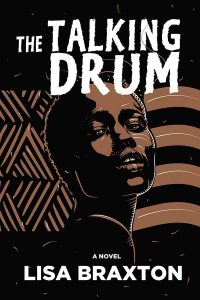Growing up in the 1970s in an urban industrial community in Southern Connecticut, I spent many of my Saturdays helping out at the clothing store my parents owned—waiting on customers, ringing up sales, taking inventory. Braxton’s Men’s Shop was in the heart of a largely African American neighborhood not far from the harbor. Because the store was on a corner, potential customers coming from two directions could glimpse the wide-lapeled tailored suits, bell bottom pants, platform shoes and stylish dress hats carefully arranged in the display windows by Mom and Dad.
The same block had an ice cream shop, dry cleaners, bank, sandwich shop, and beauty parlor. Catty-corner from the store was a record shop with speakers positioned above the doorway that blasted the latest R&B hits. Marvin Gaye, Sly and the Family Stone, Aretha Franklin, and Diana Ross and the Supremes could be heard blocks away.
Unfortunately, as the years went by, that commercial strip began to lose its vibrancy. The steel plant that generated millions of dollars left the city, resulting in many in the working-class neighborhood losing their jobs. Other factories left. Crime increased. Slowly, city officials began acquiring the two- and three-family houses near the harbor, further cutting into my parents’ customer base and that of the other mom and pop businesses.
Eventually there was buzz around the city that officials were pursuing redevelopment of the waterfront area. Agreements slowly solidified and plans got underway to create a mixed-use development of upscale restaurants, a marina, movie theaters, and a high-end residential community.
The city handed my parents a check and demolished the building that housed their store. Plans are underway to redevelop that block, which is currently a shell of its former self.
There’s widespread agreement that because of the shutdown of businesses and stay-at-home orders due to COVID-19, small businesses and mom and pop stores are in trouble. Economists and other experts predict that hundreds if not thousands could go out of business. In some communities, residents desperate to save their neighborhood stores have banded together to support the businesses online.
But small businesses have been in peril for quite a while, long before the pandemic. Gentrification—changing the character of a neighborhood through the pursuit of more affluent residents and businesses, much like what’s happening where my parents had their store—has led to the shuttering of many mom and pop stores for generations.
The seven books below tackle the theme of gentrification through different lenses: eerie plots, a whodunnit-mystery, family drama, and reimagining of a classic tale.

The Beautiful Things that Heaven Bears by Dinaw Mengestu
After Sepha Stephanos watches his father beaten and kidnapped by soldiers, he flees Ethiopia to the United States and opens a shabby grocery store in Logan Circle, an area undergoing gentrification. His lonely existence is brightened when he meets American History Professor Judith and her biracial daughter Naomi. His relationship with them becomes strained as Judith becomes part of the gentrification process that displaces longtime residents.
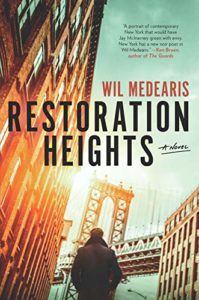
Restoration Heights by Wil Medearis
The fiancé of a scion to an old-money Upper East Side goes missing. Reddick, a young, white artist, lives in Bedford-Stuyvesant, a historically black Brooklyn neighborhood besieged by gentrification that himself plays a part in, is determined to unravel the mystery. Add to that deep racial tensions that result from economic inequality and unrestricted urban development and you’ve got a page turner.
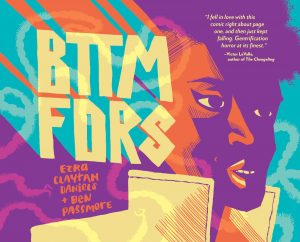
BTTM FDRS by Ezra Claytan Daniels and Ben Passmore
Young urbanites, aspiring fashion designer named Darla and her image-obsessed friend, Cynthia, move into a poor neighborhood for the cheap rent. They soon discover something far more seductive and sinister lurking behind the walls of their new home. What they don’t bargain for are body parts spilling over toilet owl rims and face-eating tentacles crawling out of ventilation systems. This Afrofuturistic graphic novel gruesomely satirizes gentrification in Chicago and blends discussions around race relations, cultural appropriation and urban injustice.

Everything Here is Beautiful by Mira T. Lee
Family loyalty is tested in this novel in which mental illness is the centerpiece. Miranda is elder sister to Lucia, a brilliant journalist whose periodic descent into severe psychosis has taxed their relationship and left Miranda emotionally exhausted. The characters’ world comes to life in vivid descriptions of the gentrifying Lower East Side of 1990s New York City, the heavily immigrant towns along the Hudson River, and several communities in Ecuador.

The Turner House by Angela Flournoy
A story about the Black American diaspora, segregation and gentrification. The Turners have lived on Yarrow Street for over fifty years. Their house, which is apparently haunted, has seen children come and go and the arrival of grandchildren. The house still stands despite abandoned lots, an embattled city, and suburban flight. The Turner children must decide what to do with a house worth just a tenth of its mortgage.
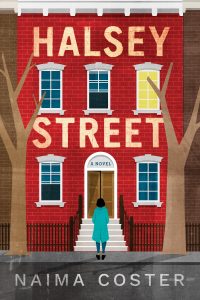
Halsey Steet, by Naimi Coster
Gentrification is a metaphor for a family in crisis. Penelope Grand, an artist living in Pittsburgh, is called home to care for her ailing father, Ralph. She discovers that her Brooklyn neighborhood is not the same. In fact, it’s been completely transformed. Gentrification has cost Ralph everything—his record store, his passion, and his marriage. How do you repair relationships that are in so much disarray? And will “helping” actually fray things more?
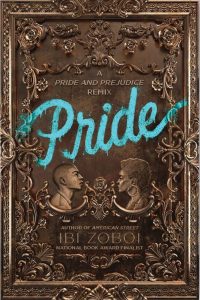
Pride by Ibi Zoboi
Gentrification, cultural identity, and class issues come together in this update of Jane Austen’s Pride and Prejudice featuring all characters of color in this young adult novel. Zuri Benitez has pride. Brooklyn pride, family pride, and pride in her Afro-Latino roots. But pride might not be enough to save her rapidly gentrifying neighborhood from becoming unrecognizable.
*


